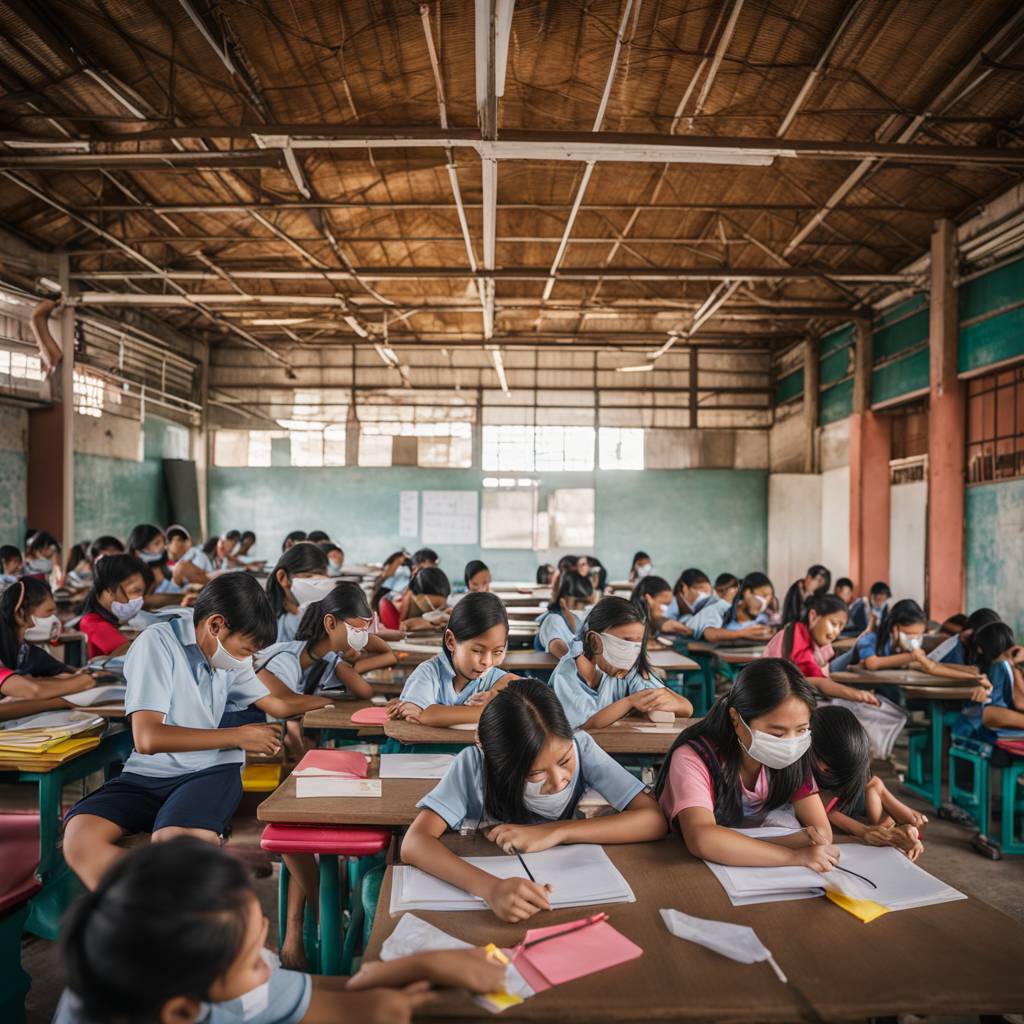Thousands of schools in the Philippines have suspended in-person classes due to dangerously high temperatures. The Department of Education reported that 5,288 schools across the country have switched to remote learning, affecting over 3.6 million students. This decision comes as the archipelago nation experiences the hottest and driest months of the year, compounded by the El Nino weather phenomenon, which has made conditions even more severe. Many schools lack air conditioning, causing students to swelter in poorly ventilated, crowded classrooms.
In response to the extreme heat, the Department of Education has issued an advisory allowing school administrators to determine when to switch to remote learning, particularly in cases of extreme heat and other calamities. Some schools have chosen to reduce class hours in order to avoid teaching during the hottest times of the day. The state weather forecaster has predicted that the heat index will reach dangerous levels of 42 to 43 degrees Celsius in various parts of the country on Friday, with Manila expected to reach an “extreme caution” level of 40 degrees Celsius, where heat cramps and exhaustion become possible.
The heat index in the Philippines measures what the temperature feels like, factoring in humidity levels. Despite the actual maximum temperature in Manila reaching 35.5 degrees Celsius on Friday, the heat index is expected to create conditions that may pose risks to students and teachers in schools across the country. The decision to suspend in-person classes and switch to remote learning is aimed at safeguarding the well-being of students and ensuring their safety in the face of extreme weather conditions. Schools will continue to monitor the situation closely and make adjustments as needed to protect their students’ health and welfare.
As the heatwave intensifies in the Philippines, the education department is taking proactive measures to mitigate the impact on students and teachers. By allowing schools to transition to remote learning when temperatures reach dangerous levels, authorities are prioritizing the safety and comfort of those within the educational system. With millions of students affected by the suspension of in-person classes, it is essential for schools to adapt to the changing weather patterns and ensure that learning can continue while protecting the health of everyone involved. This decision reflects a commitment to addressing the challenges posed by extreme weather events and prioritizing the well-being of students in the face of adverse conditions.













